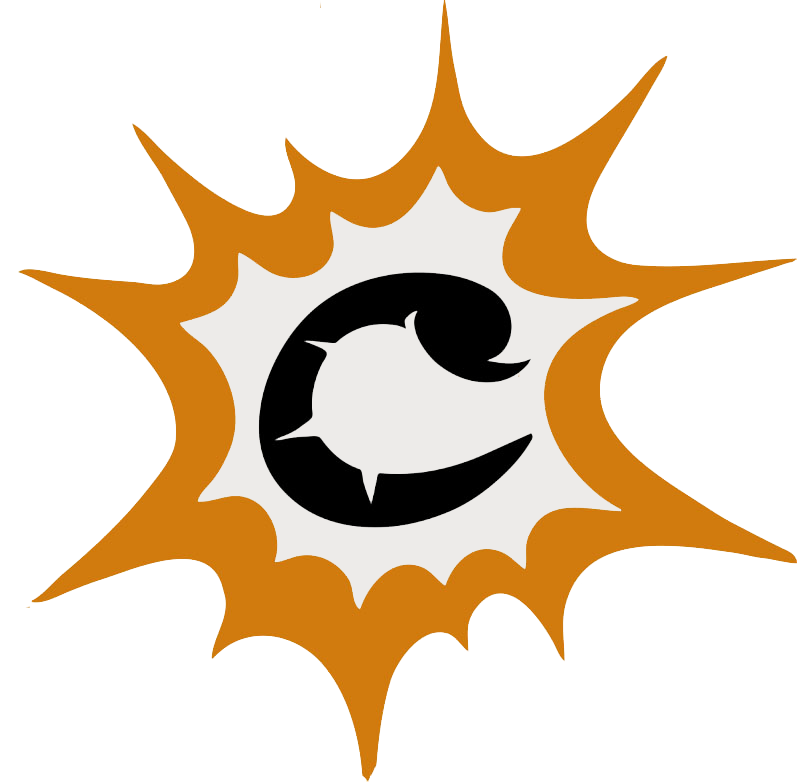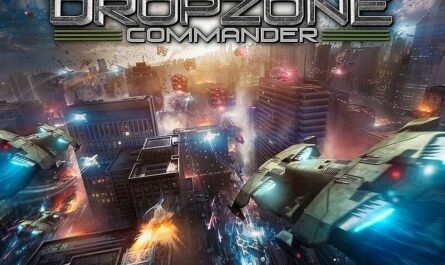Guild Ball is a tabletop sports miniatures game where two teams, representing different Guilds, play a ball game similar to football, but where physical contact is allowed and even strongly encouraged!
Cover illustration by Le Zonion
Objective: May the best team win!
In Guild Ball, the first player to reach 12 victory points wins the game. You earn these points either by scoring a goal [4 VP] or by sending an opponent to the infirmary [2 VP] (that is, a miniature, not the human player. To avoid confusion later in this article, I will refer to the miniatures as “players” and the human controlling them as “the coach”).
Thus, each Guild has a more or less pronounced affinity for a certain type of strategy: playing the ball or looking for a fight.

Preparing the match
Choosing your guild
Before sending your team onto the pitch, you first need to choose the Guild you will represent from the 20 existing Guilds:
- The Alchemists
- The Blacksmiths
- The Butchers
- The Cooks
- The Engineers
- The Falconers
- The Brewers
- The Farmers
- The Fishermen
- The Ratcatchers
- The Morticians
- The Navigators
- The Order of Solthecius
- The Hunters
- The Lamplighters
- The Masons
- The Miners
- The Shepherds
- The Lumberjacks
- The Union
As you can see, each Guild represents a profession. So forget about ghouls, dragons, or blessed knights in this medieval-themed game. And that’s a good thing! It offers a fresh experience both on the game table and during your painting sessions.

Building the team
A Guild Ball team must consist of six players, including a captain and a mascot (an animal). In most Guilds, you have access to about ten characters (including 2 or 3 captains). Each player has special abilities, which can be active and/or passive. You will need to weigh the strengths and weaknesses of your core squad to select the starting six that best fit your strategic plan.
Setting up the field
The classic Guild Ball format is played on a 91×91 cm (3’x3′) pitch. It is divided into two halves: one for each team. Six inches from the back lines stand the goalposts. This offset from the edges allows players to move around the goals, similar to ice hockey nets. Note that the goal is not a cage with a single entrance. It is a terrain element on a 50 mm diameter base that must be touched with the ball to score 4 points.

To make things more interesting, the playing area can be scattered with terrain features, rough or slippery, providing movement bonuses or penalties for the players. There are also obstacles and cover, used to block lines of sight or provide protection. Yes, in Guild Ball, the pitch is far from a pristine, perfectly maintained grassy field. In fact, in Guild Ball, you don’t always have to play on a standard pitch: a royal courtyard or a market square can perfectly host a match!
Show off your colors!
Did you know that each Guild has its own themed goalpost and ball? The Cooks use a cauldron as a goal while the Farmers use a pumpkin as a ball! While their shape doesn’t affect gameplay, these elements personalize the pitch for visual enjoyment. They’re also a great opportunity to express your creativity by making your own goals or balls.

The game system
Once your players are on the field, the goals are set up, and the ball is in the center, the match can begin!
Resource management
Guild Ball, like most miniature skirmishes, is clearly about positioning — but it’s also a matter of managing your resources… or should I say, your actions? Resources are the “currency” for taking actions. There are two types in the game: Influence and Momentum. These must be managed carefully because any unspent resources at the end of the turn are permanently lost.
Influence: Fuel for your actions
At the start of the turn, each player on the field generates Influence. The amount generated is unique to each miniature, a characteristic of their profile. Influence is used to perform actions such as Sprint (1 Influence), Charge (2 Influence), or make a Pass (1 Influence), to name just a few.
Since Guild Ball is a team sport, all Influence generated at the start of the turn goes into a common pool. It’s then up to you to decide how to distribute these points among your miniatures. You can give little or lots of Influence to each figure, but each has a maximum limit. If you enjoy this mechanic, you’ll also find it in the sci-fi skirmish game Infinity.
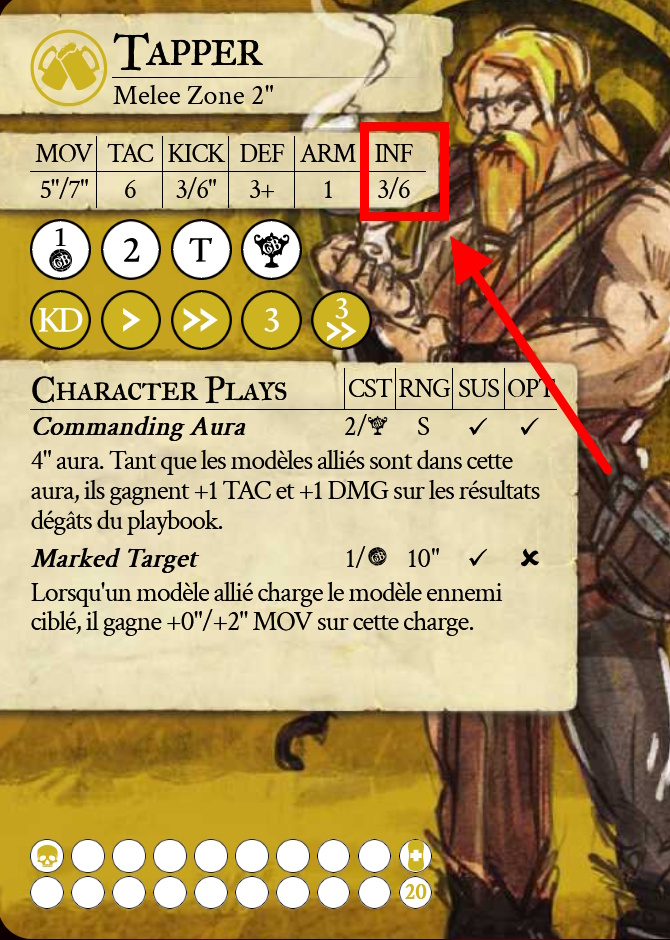
This management of Influence point allocation (and thus actions) prevents you from wasting them on an isolated player, as is often the case in many other miniatures games. The common pool ensures you always apply pressure where the action is happening or where the ball is rolling.
No influence? No problem!
A player who receives no Influence points can still perform the Jog action. It’s free. This movement allows you to reposition miniatures where they will be most useful without affecting the actions of the rest of the team.
Momentum: nitro for super-actions
“In a Guild Ball match, team actions and gameplay can generate momentum and drive. The rising excitement, the crowd’s cheer, the faster pace—this is called Momentum: a resource that allows players to take advantage of the mounting pressure of the match by granting access to special actions normally unavailable.” – Excerpt from the Guild Ball rulebook, defining Momentum.
Each time a team scores a goal, passes the ball, or knocks out an opposing player, the allied team gains 1 Momentum point (MP). A team can also gain 1 MP when choosing an Epic result during an Attack (more on this later).
Momentum points can then be spent to perform rare actions, such as a counter-attack, healing, or shooting at goal. Momentum is therefore the most coveted resource in the game. Without it, no shots on goal and thus no victory points for ball-playing Guilds!

Interacting with the ball
Scoring goals, yes, but perhaps we should first know how to interact with the ball, coach, right? You’re right. With all these explanations, I had lost sight of the ball.
A player automatically picks up the ball (if isolated) when within 1 inch of it. Snapping the ball does not interrupt the player’s Run action, meaning you can carry it along the way. This is convenient for maintaining the tempo and simply realistic!
Once picked up, the ball stays with your player unless it is released (via a Pass, a Shot, or a Drop) or taken away (via a Tackle, a Knockdown, or a KO).
The KICK characteristic of each player indicates how many D6 the character rolls for a Shot or Pass, as well as the maximum range of that Shot or Pass. A result of 4 or higher is required to successfully complete the action.
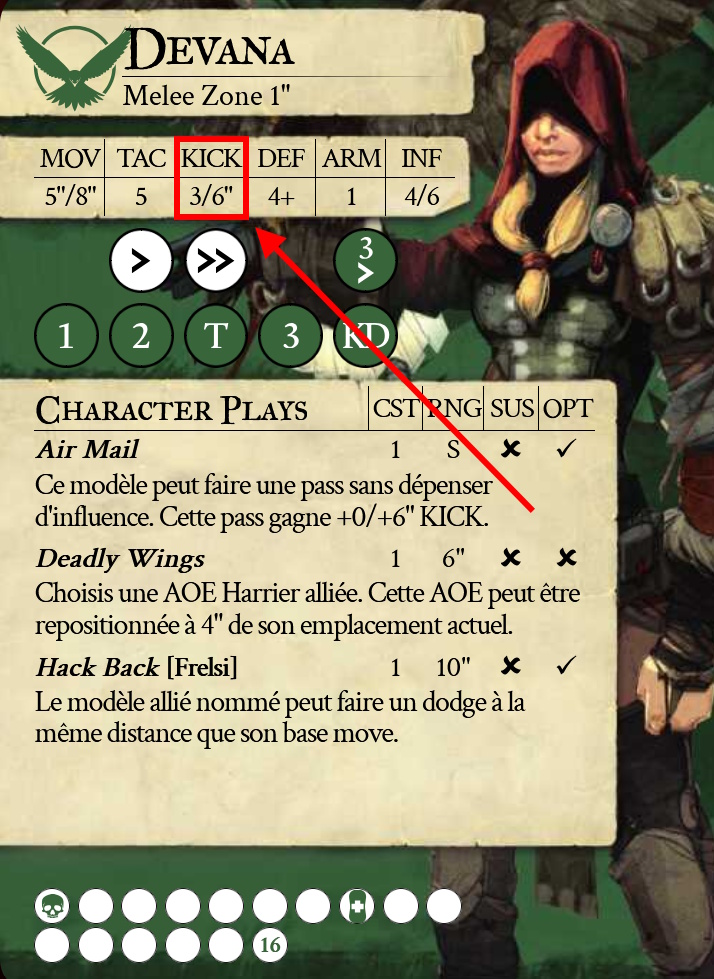
Just like in real life, the ball’s trajectory is not always as expected, and bounces can be surprising. To illustrate this, Guild Ball uses a ball scatter mechanic, calculated using a template (semi-circular or circular, depending on whether it is a shot or a fumble).
Each template points in six different directions. It is placed around the ball. Then, 2 D6 are rolled: the first indicates the direction the ball will take, and the second the distance traveled in inches. Simple and effective!
Engaging in a melee
Playing the ball is great when you have it under control. Otherwise, you will need to perform physical interventions on opposing players!
Combat resolution in Guild Ball does not follow the traditional system of other miniatures games, both in its mechanics and in how hits are applied.
First, Guild Ball does not use an attack-defense system. Only the attacker rolls dice, equal in number to their Melee value (TAC), and can add 4 extra dice if the attack is part of a Charge.
It is the defender’s Agility (denoted DEF) that determines if the attack succeeds, not the attacker’s stats. For example, if the target has a DEF [3+], the attacker must roll 3 or higher on their dice to succeed. Note that not all successes automatically become hits: the defender can block some using their Armor (ARM).
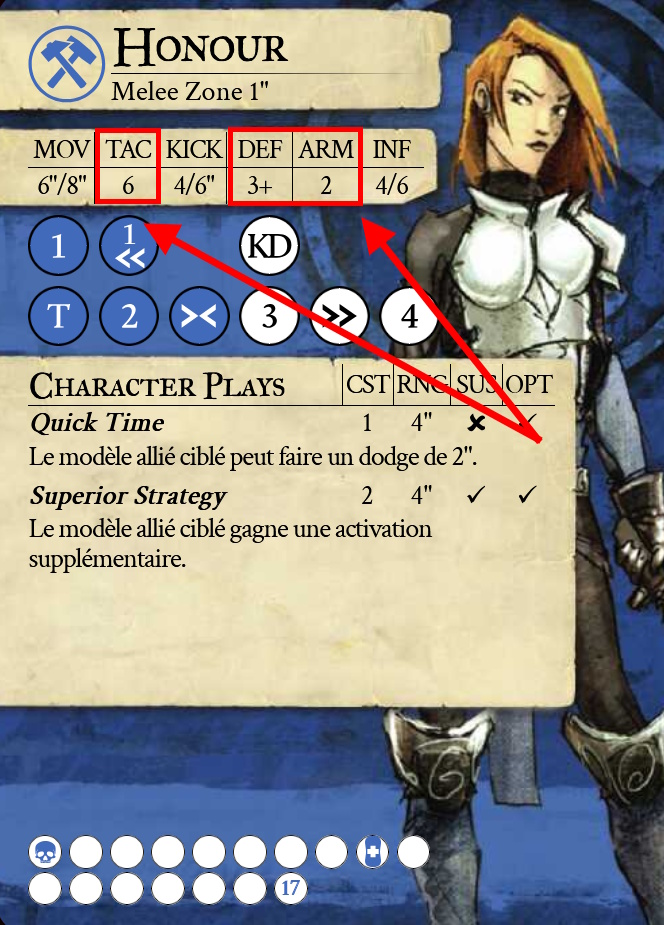
With a 3+ DEF, an opponent targeting her must roll at least 3 or higher to score successes. But with her ARM of 2, Honour can block 2 of those successes.
Second, the sequence of assigning hits is unique. Since Guild Ball is a sport, a player doesn’t always aim to deal damage. They might, for example, want to tackle an opponent to recover the ball or push them away from an allied player. To reflect these choices, a table called the Playbook is present on every character card:

This table, always consisting of 2 rows and up to 6 columns, lists various effects: Tackle (T), Dodge (<), Push (>), Knockdown (KD), Damage (#), and sometimes a Character Play (GB). The Playbook is read from left to right and functions like a rewards panel depending on the success of your attack. The more successes, the more columns you unlock, offering a wider choice of effects you can apply.
For example, in the Playbook shown above, an attacking character who scores a single hit can use one of the two results in the first column. In this example, they can either deal 1 damage to the target (1) or perform a Tackle (T). If the attacker scored 3 hits, they could choose an effect from the first 3 columns, giving 5 options in total.
Don’t forget the colored background options (blue in this case), which are Momentous results and grant 1 Momentum point when chosen 👀. If multiple icons/numbers are present, you apply all effects as much as possible.
Sometimes the attacker achieves what is called Wrapping, meaning the net attack pool contains more successes than there are columns. In this case, the player can choose an effect from the first six columns, then start counting from the left again for each success beyond the sixth. For each additional column counted, the player can select an effect from those columns.

Adding some excitement
To add tactical depth to the game, I still need to talk about a few important gameplay elements:
Character traits and special abilities
As mentioned at the beginning of the article, each character is unique. Each has special abilities that can be activated by spending the associated Influence cost. For example, Stave the Brewer can throw barrels of beer at opponents, causing a Knockdown followed by a 3″ Push. Meanwhile, Smoke the Alchemist can throw a Smoke Bomb, creating a persistent area effect that provides cover to all players within it.

Beyond these abilities, players also inherit the special rule linked to their Guild. For example, the Navigators have the permanent ability Precise Calculation, which allows them to reroll any number of attack or Kick dice.
Game Plan cards
Finally, Game Plan cards are used at the start of the turn and serve three purposes:
- Determine which player has initiative that turn;
- Apply gameplay effects;
- Generate additional resources;
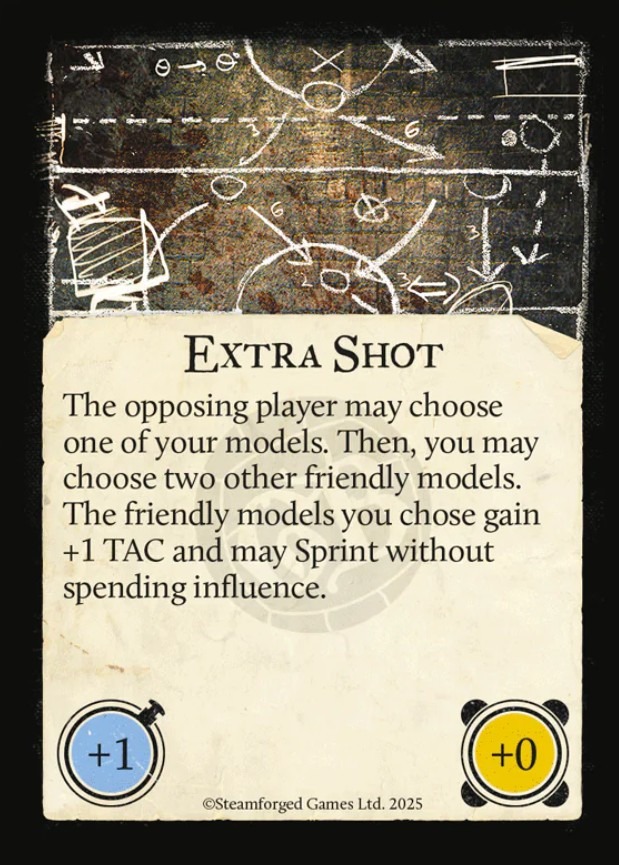
Each card contains an effect, a priority value, and an influence value. The higher the priority value, the greater your chance of acting first, but the lower the Influence you can distribute. Conversely, high-Influence cards have low priority. This mechanic is reminiscent of Command cards in Star Wars: Legion, which serve a similar function (determine priority, provide orders inversely proportional to priority, and add gameplay effects).
From a gameplay perspective, these cards introduce hidden information during the game and require mind-reading skills to anticipate your opponent’s moves—or to surprise them!
Try Guild Ball for free!
Curious about the game and want to try it out? Good news: there are several ways to experience Guild Ball at little to no cost:
- Try the game online: via Wartable, Tabletop Simulator, or Vassal (with the Guild Ball module).
- Try the print version: Steamforged Games, the publisher, offers a free print & play version. This is possible because Guild Ball is fully playable in 2D!
- Try the game by freely printing the starter set: Steamforged Games also offers (for free) the entire Guild Ball Starter Set for those with access to a 3D printer.
All the game cards are available for download on the Guild Ball App website, as well as the rulebook (free):
In summary
Guild Ball is much more than two teams clashing on a pitch. It is a blend of strategy, resource management, and anticipating your opponent’s actions. Every pass and knockdown builds tension up to the climax of a scored goal… or not. Just like in real sports, last-minute defensive saves can happen, making you despair and fear a comeback since any player sent to the infirmary will eventually return to the field. Guild Ball promises matches that are as intense as they are fun.
If you’re looking for a break from your usual wargames, give Guild Ball a try. Its gameplay mechanics are definitely worth exploring. The game has become extremely accessible now that it is completely free, whether you prefer to play online, on the table with a 2D print version, or by 3D-printing your own miniatures. Honestly, it has never been easier to become a coach, test multiple guilds, and find the one that best fits your play style.
So, what are you waiting for? Join us on the pitch!
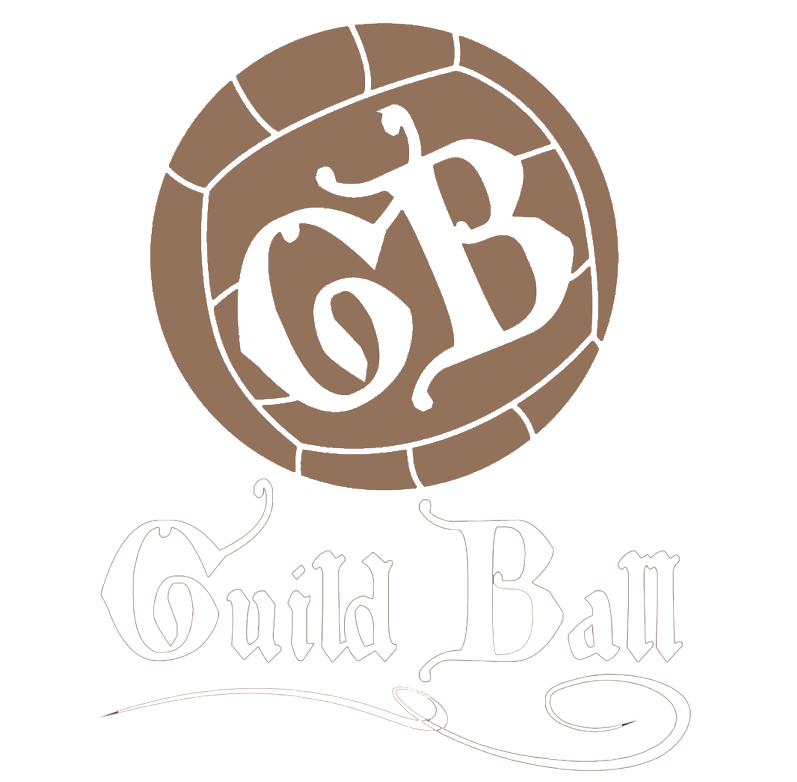
Find Guild Ball players
Join your country’s Guild Ball Discord community and meet players near you.
